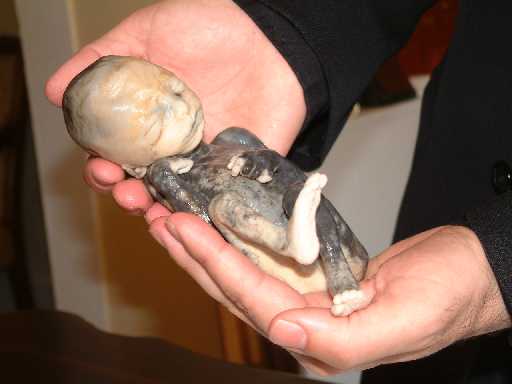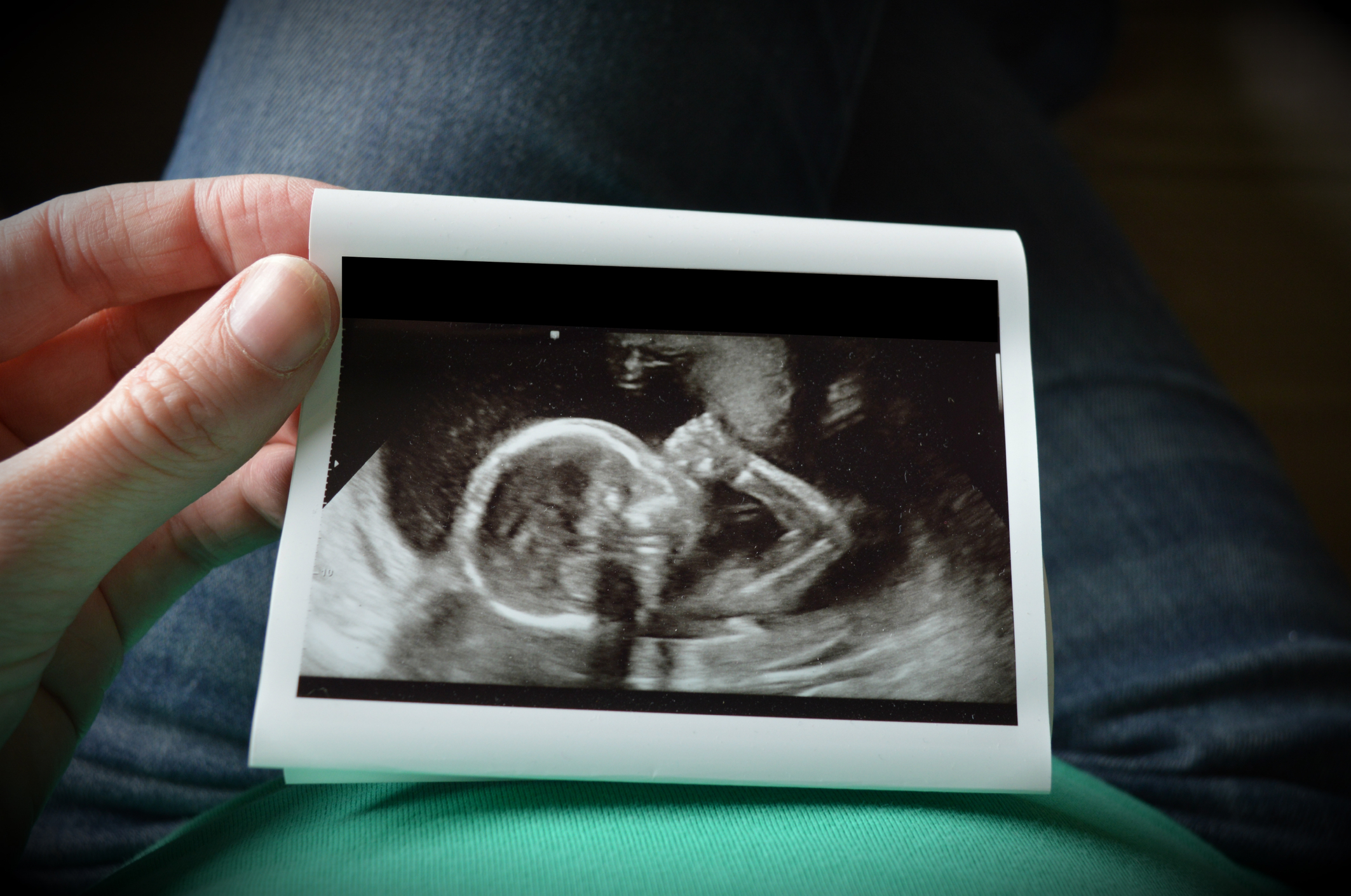“Inside the remains of the rib cage I found a tiny, beating heart. I was finally able to remove the head and looked squarely into the face of a human being — a human being that I had just killed.”
Former abortionist Dr. Paul Jarrett spoke at the conference “Meet the Abortion Providers” sponsored by the Pro-Life Action League. His testimony is posted in its entirety here.
While Jarrett was still a resident, he was required to collect the dead bodies of aborted babies that were killed by saline, a method of abortion that is not often used today, in which caustic saline solution was injected into the woman’s uterus, poisoning and burning the baby to death. Labor would then be induced.

This baby was aborted by the saline abortion method. Picture provided by Priests For Life.
Dr. Jarrett witnessed one child born alive to a hysterical mother who had a saline abortion. The child, he said, lived for several days.
It was a tragedy that led to Jarrett taking up the abortion instruments himself. In 1970, three years before Roe v. Wade, abortion became legal in New York. Women from all over the country went there for abortions. During his time at Coleman Hospital, a young woman died as a result of complications from a legal abortion—not an illegal “back alley” one — and Jarrett was deeply troubled by the loss of this young life. He felt he could do a better job as an abortionist than the doctor who killed her. Jarrett decided he would perform “safe” abortions for women.
When Jarrett finished residency and moved to a new hospital, he began his short career as an abortionist. Jarrett describes the day he committed his 23rd and last abortion.
Jarrett was performing a suction curettage abortion, where the baby is pulled through a tube attached to a powerful suction machine and ripped to pieces. The video below, featuring Dr. Anthony Levatino, describes a suction D&C abortion.
The conversation about abortion is changing. This doctor has performed over 1200 abortions, and now he’s revealing what…
Posted by Live Action on Thursday, March 3, 2016
In this case, something went wrong:
My 23rd abortion changed my mind about doing abortions forever. This patient was a little overweight and ultimately proved to be a little farther along than anticipated. This was not an uncommon mistake before ultrasound was readily available to confirm the gestational age.
14 week preborn baby
Initially, the abortion proceeded normally. The water broke, but then nothing more would come out. When I withdrew the curette, I saw that it was plugged up with the leg of the baby which had been torn off. I then changed techniques and used ring forceps to dismember the 13 or 14 week size baby. Inside the remains of the rib cage I found a tiny, beating heart. I was finally able to remove the head and looked squarely into the face of a human being — a human being that I had just killed. I turned to the scrub nurse standing next to me and said, “I’m sorry”.
I knew then that abortion was wrong and I couldn’t be a part of it any longer.
Jarrett would never do an abortion again. His career as an abortionist was derailed after only 23 abortions, when he came face-to-face with the reality of what he was doing. He had the courage to admit that he was wrong and confront his own guilt, showing commendable strength of character.
Jarrett detailed how the language invoked by the abortion industry hides the victims of abortion and the violence of abortion procedures.
One definition of a euphemism is a figure of speech where a less disagreeable word or phrase is substituted for a more accurate but more offensive one.
The deception in the language of abortion is achieved through the use of euphemisms. “Pregnancy termination” rather than abortion. “Menstrual extraction” rather than early abortion. “Products of conception” rather than baby and placenta. “Tissues” rather than flesh and bones. It makes it sound more like a Kleenex than a baby. Even “fetus” and “embryo” are Greek and Latin words for Baby. ….
All of these terms dehumanize what is being destroyed so that we deceive others — and ourselves.
Hopefully Jarrett’s story will help people realize how cruel abortion is to preborn babies.









